The country of Israel is in the Middle East, with the Mediterranean Sea to the west and the Red Sea to the south. The Sea of Galilee and the Dead Sea are located in Israel, as well as the Jordan River. With all of these major seas and waterways there are plenty of spectacular fish in the country. You will find river monsters in the Jordan, unique marine fish in the Mediterranean, and popular food fish in the Sea of Galilee. However, the Dead Sea is called “dead” for a reason. There are no living fish in this super salty sea. Let’s take a look at eight spectacular fish found in Israel!
1.) St. Peter’s Fish (Musht)
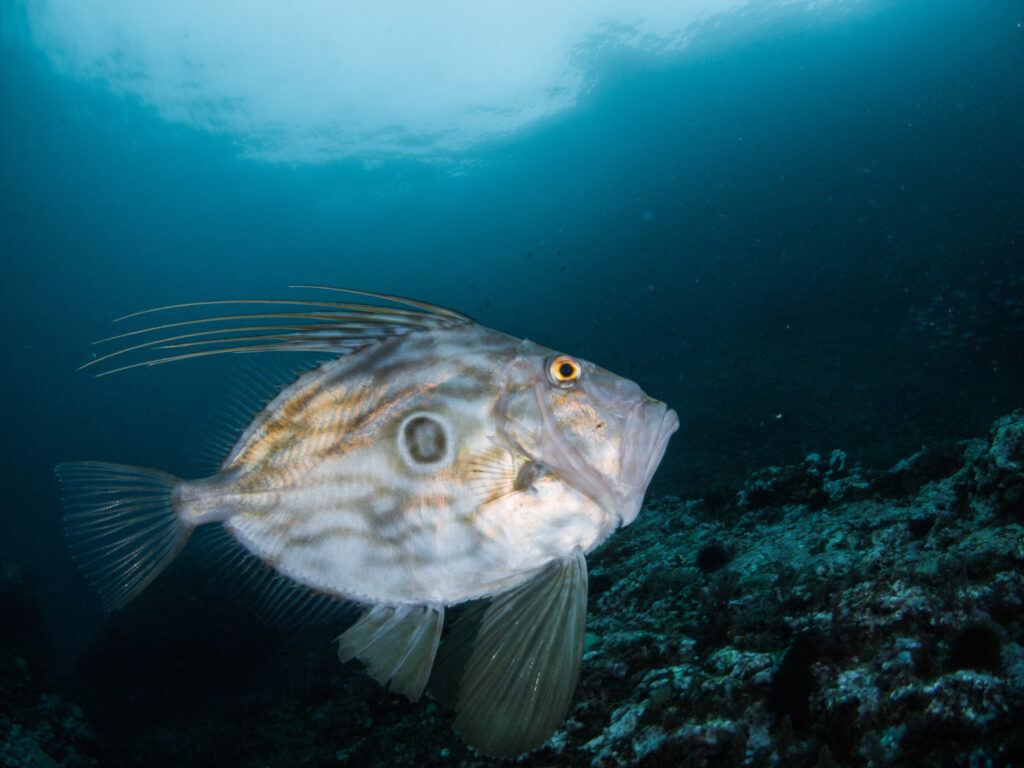
The Arabic word “musht” means “comb,” referring to their comb-like dorsal fins.
©Antonio Martin/Shutterstock.com
The locals call the silvery musht St. Peter’s Fish. The Arabic word “musht” means “comb,” referring to their comb-like dorsal fins. They are very traditional looking fish, with silvery scales, a lighter belly, and large black eyes. Most average around 12-15 inches long, with some reaching 18 inches. This common food fish is a type of tilapia that inhabits the Sea of Galilee and is commonly on the menu at restaurants.
The name “St. Peter’s Fish” comes from the Biblical story of how Peter asked Jesus about paying the temple tax. Jesus sent Peter fishing in the Sea of Galilee. The first fish Peter caught had a sliver coin in its mouth, just what Peter needed to pay the temple tax. It is believed that the musht or tilapia was most likely the species of fish that Peter caught.
2.) Kinneret Bream
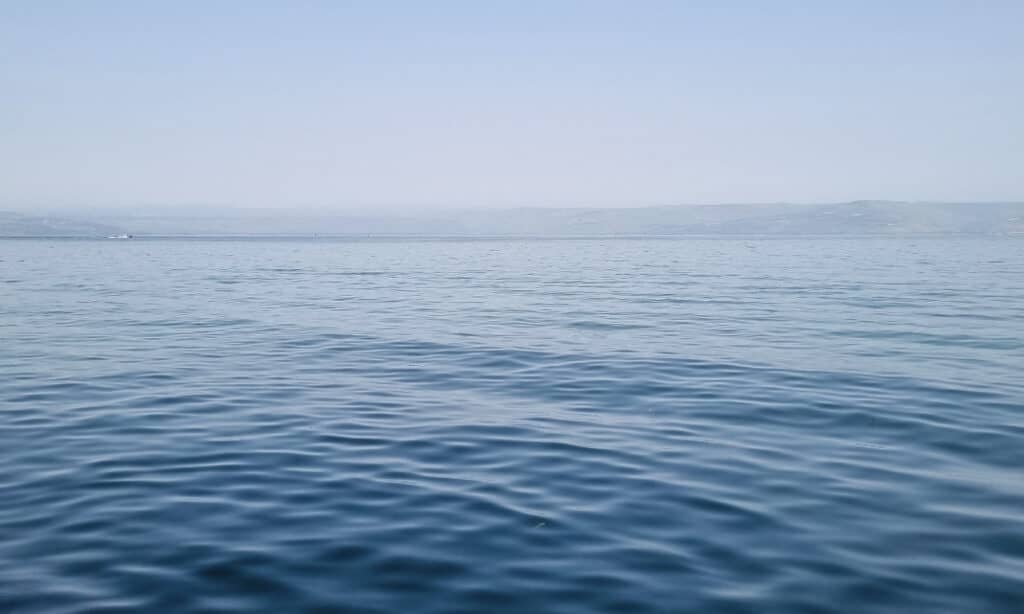
A common fish found in the Sea of Galilee is the Kinneret bream (the Sea of Galilee is also called Lake Kinneret, its Hebrew name).
©Meirav Ben Izhak/Shutterstock.com
Another common fish found in the Sea of Galilee is the Kinneret bream, also known as the Kinneret bleak (the Sea of Galilee is frequently called Lake Kinneret, its Hebrew name, referring to its violin shape). Seeing schools of these little fish swimming in synergy is spectacular! Kinneret bream are only about 5 ½ inches long and silvery in coloration. They belong to the Cyprinidae family, the same family as carp and minnow, but they certainly look more like their minnow relatives. Kinneret bream can only be found in Lake Kinneret, but there are plenty of them as they are a species of “Least Concern.”
3.) Tuna
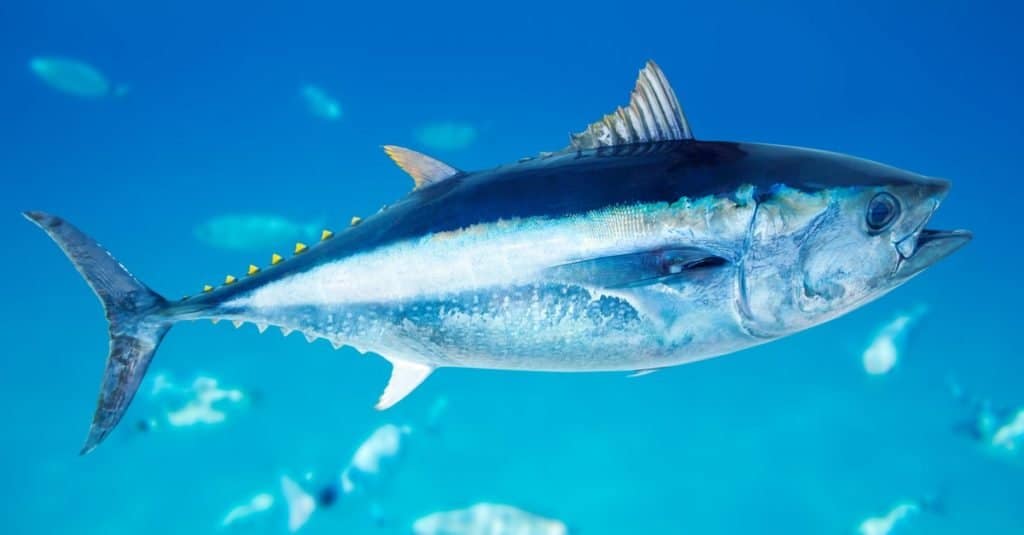
The Mediterranean Sea is known as one of the primary spawning areas for the massive Atlantic
bluefin tuna
, the largest of the tuna species.
©lunamarina/Shutterstock.com
Israel’s coast on the Mediterranean is around 170 miles long, with the major cities of Tel Aviv and Haifa right on the Sea. There are multiple smaller fishing port cities along the coast as well, with many fishermen focusing on the extremely popular tuna. The Mediterranean Sea is known as one of the primary spawning areas for the massive Atlantic bluefin tuna. Atlantic bluefin are the largest of the tuna species and can weigh between 1,000-2,000 pounds! However, most are closer to the 500-550 range. Tuna are torpedo shaped and nearly scaleless, with silvery skin and retractable fins. You can also find smaller tuna species like the skipjack and albacore tuna. Even though they are smaller than the Atlantic, the albacore tuna can still get to be 80 pounds and reach lengths of 4 feet, while skipjack can grow to 40 pounds and be 3 feet long.
4.) Dusky Grouper
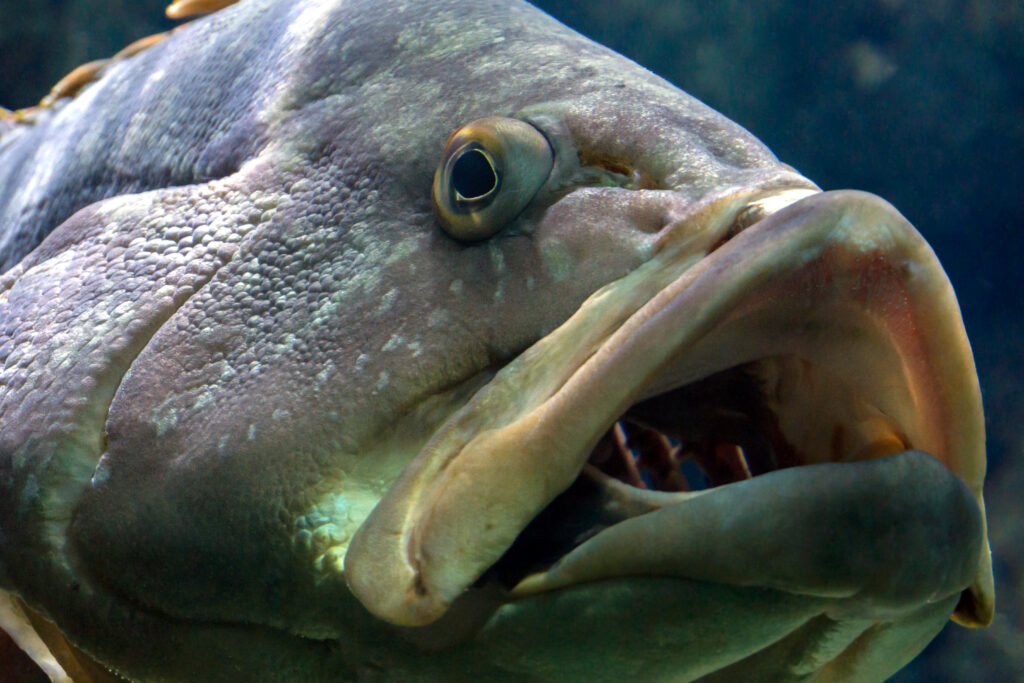
The Dusky Grouper have cartoonish large heads with pouty, oversized lower lips.
©isidoros andronos/Shutterstock.com
The massive dusky grouper is certainly a heavy-bodied fish! They have cartoonish large heads with pouty, oversized lower lips. They have a matching cranky attitude and are known to be quite territorial. Appropriately names, the dusky grouper is quite dusky in color. It has blotchy skin and a spectacular spiked dorsal fin. These bottom dwellers can get to be 110 pounds and about 5 feet long! You can find them along the rocky bottomed areas of the Mediterranean Sea.
The Environmental Protection Minister Gila Gamliel of Israel released a recent order to protect two grouper species, including the dusky grouper. The Mediterranean dusky grouper is listed as “Endangered” by the IUCN due to commercial overfishing. Governments have put fishing restrictions in place throughout the world. For example, in France, spearfishing for this species is banned, to help control the remaining population and increase it in the future.
5.) Mediterranean Parrotfish
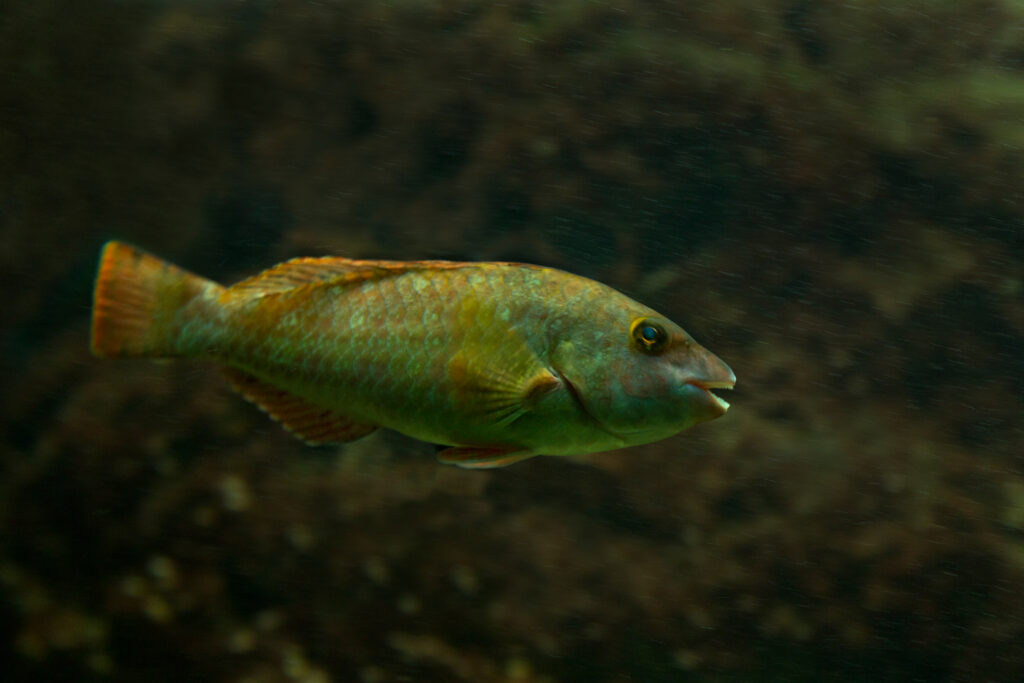
Male parrotfish are a unified gray-blue color.
©Podolnaya Elena/Shutterstock.com
In contrast to the dusky grouper, is the Mediterranean parrotfish. These brightly colored gorgeous fish almost look like they are smiling! Parrotfish are also quite a bit smaller than grouper, in the 6–12-inch range. Females are a vibrant red with bright yellow marking near their tail fin and along the eyes. Right behind the eyes, the body has a wide patch of silvery-blue. Males are a unified gray-blue color. Interestingly, almost all parrotfish start out as females and then change over to males!
6.) Tasseled Scorpionfish
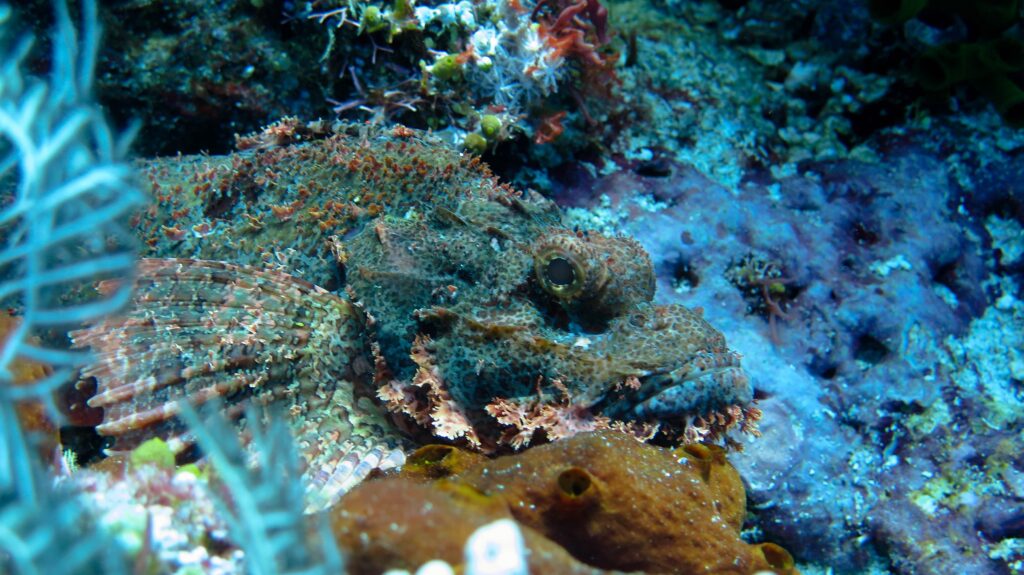
Tasseled Scorpionfish are extremely well camouflaged and blend in with the coral reefs and the rocky bottom of the sea.
©asharibare/Shutterstock.com
Moving on to a different body of water, you will find some of the most diverse collections of fish in the Red Sea. Israel has a small border along the Gulf of Aqaba that provides a gateway to fishing and exploring the magnificent Red Sea. One of the most unique fish in this sea is the tasseled scorpionfish. They are extremely well camouflaged and blend in with the coral reefs and the rocky bottom of the sea. Scorpionfish can even change color to blend in with their surroundings, similar to how chameleons change color. They even have algae-like tassels hanging off their face to create an even more coral-like appearance.
Tasseled scorpionfish are not that big, averaging 12-14 inches, but they are very dangerous! They have spines that produce a toxic venom that is extremely painful and can be deadly. It’s best to avoid this particular spectacular fish!
7.) Barracuda
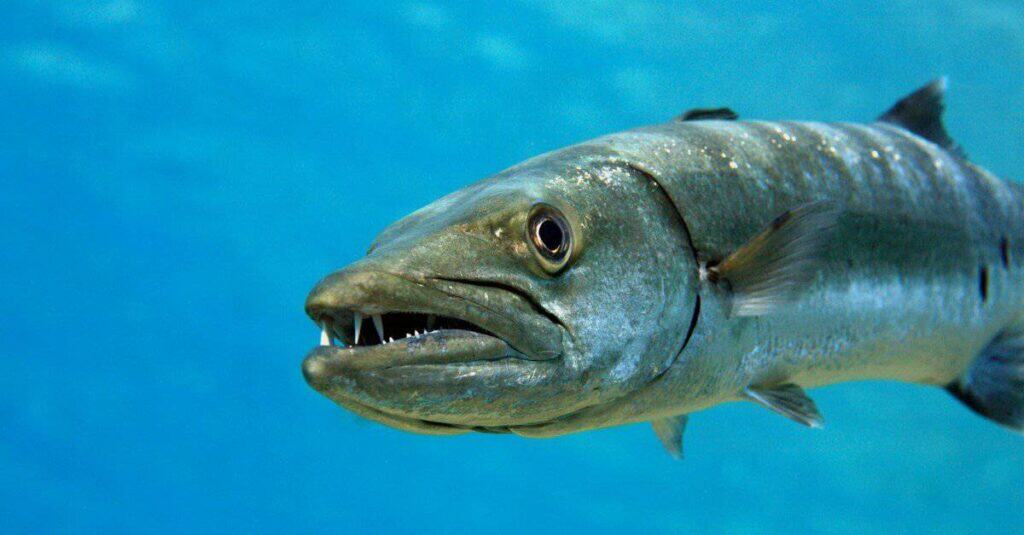
Barracudas have sharp teeth and a streamlined silver-gray body with darker vertical striped markings.
©aquapix/Shutterstock.com
The barracuda, or “cuda”, is a dangerous looking fish due to their mouth full of sharp pointed teeth. They are also an inquisitive fish and have a reputation of swimming near divers, but attacks on humans are very rare. Barracuda can reach impressive weights of up to 100 pounds. They have a streamlined silver-gray body with darker vertical striped markings. One fun fact about barracuda is they are fast…really fast! Barracuda can reach speeds of 36 mph in short bursts.
In Israel, barracuda inhabit both the Mediterranean Sea and the Red Sea. They often stay near the surface of the water and prefer coral reefs near the shoreline. This is one of the reasons they are a more familiar fish to humans, especially to divers. While most barracuda are closer to the 3-4-foot range, they can reach lengths of 5 feet.
8.) Masked Butterflyfish
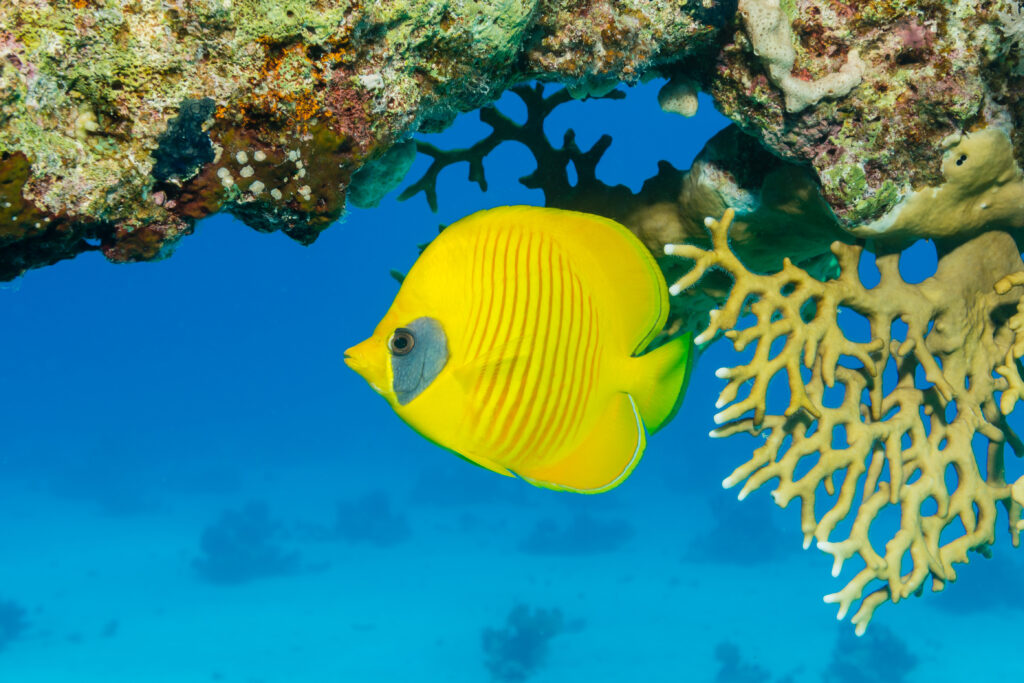
One of the most spectacular fish found in Israel is the masked butterflyfish.
©kaschibo/Shutterstock.com
One of the most spectacular fish found in Israel is the masked butterflyfish. You can’t miss this beautiful vibrant yellow species that often swim in pairs or small groups. These roundish fish are about the size of a salad plate, about 6-9 inches long, and have a small mouth that sticks out from the front. They are universally yellow with thin vertical red lines on their side. Just behind their eyes is a gray blue “mask,” or patch. They are sometimes called bluecheek butterflyfish.
They typically form bonded pairs and are monogamous, which is why it is common to see two swimming in unison. Masked butterflyfish will work together during feedings, with one keeping watch while the other nibbles on hard coral, the main food of their diet. These bright yellow butterflyfish are certainly spectacular!
The photo featured at the top of this post is © Alan Slater, CC BY-SA 3.0, via Wikimedia Commons – License / Original
Thank you for reading! Have some feedback for us? Contact the AZ Animals editorial team.






